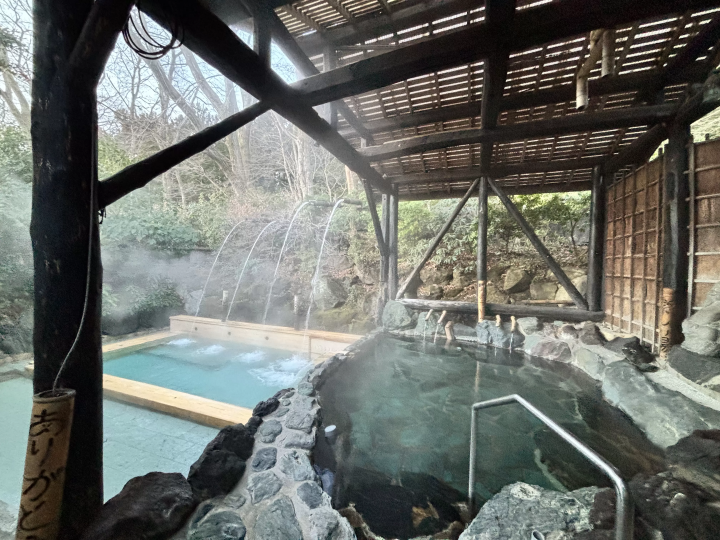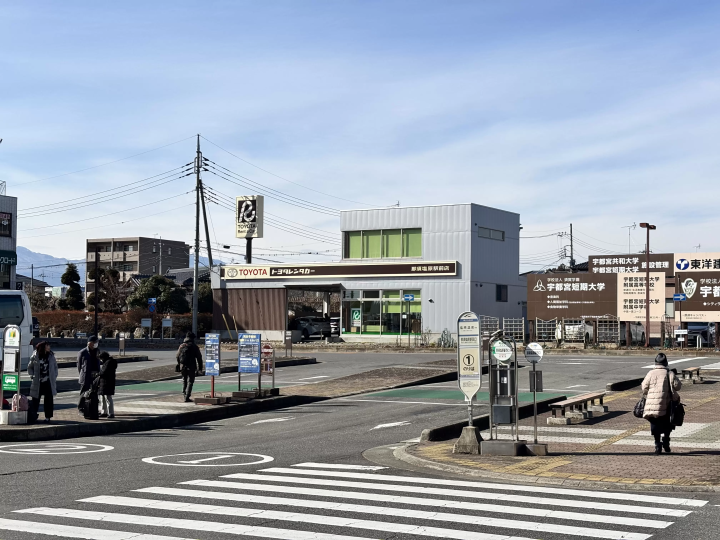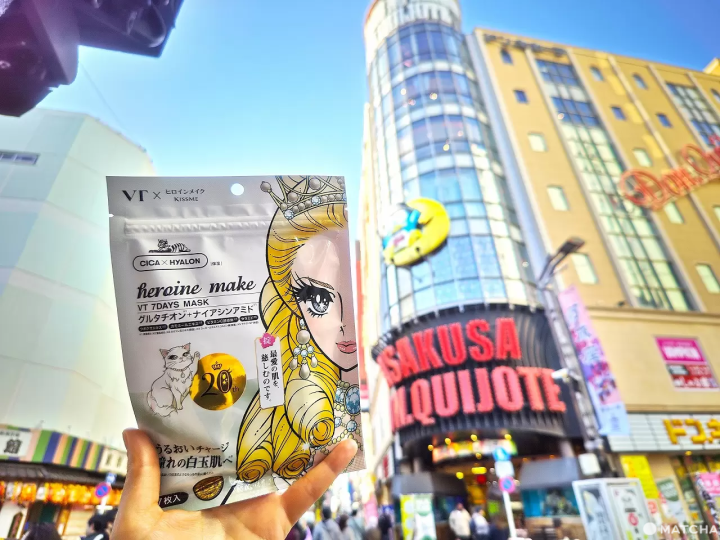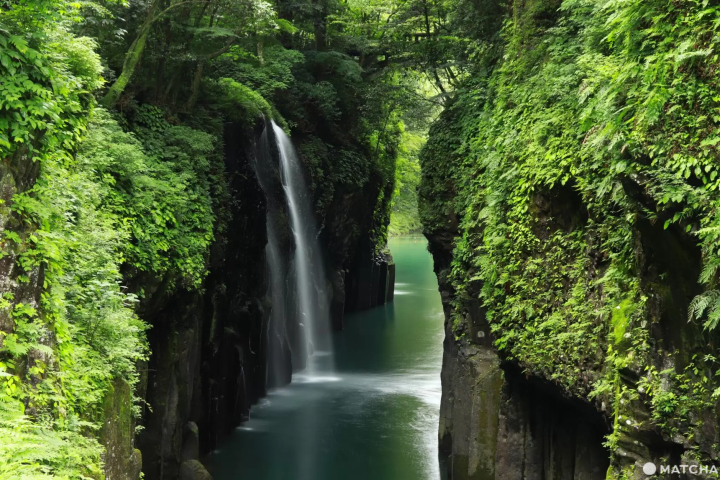The Hidden Hot Spring of Itamuro Onsen in Nasushiobara, Tochigi: A Complete Guide to Its History & Charm

Itamuro Onsen, a 1,000-year-old healing hot spring in Nasushiobara, Tochigi, is known for its clear alkaline waters that leave skin smooth. Designated as a National Recreation Hot Spring Area in 1971, it offers stunning natural scenery. Discover its history, bathing methods, and surrounding nature in this article.
-
Table of Contents
- 1: The history of Itamuro Onsen
- 2: Characteristics of Itamuro Onsen
- 3: Recommended day-trip hot spring facilities
- 4. Nearby spots to enjoy nature
- 5: Summary
- 6. Access
1: The history of Itamuro Onsen

The history of Itamuro Onsen dates back to the Heian period. It is said that in 1059, Nasu Saburo Muneshige discovered the hot spring while out hunting. After that, it became known as the "medicinal hot spring of Shimotsuke," and many people began to visit for its therapeutic properties. In 1695, with the construction of the Aizu Nakakaido (a major trade route connecting Aizu and the Kanto region), it developed into a post town, and became even more popular as a hot spring resort.
2: Characteristics of Itamuro Onsen
Spring quality and effects

The spring quality of Itamuro Onsen is a clear, colorless, alkaline, simple hot spring, with a suitable temperature of 38-45°C. When you soak in the hot spring and stroke your skin in the water, it feels slippery, and the next moment it feels surprisingly refreshing.

It is gentle on the skin, and you will be surprised at how the refreshing feeling lasts even after you have gotten out of the bath. This spring quality is said to be effective for a variety of symptoms, including neuralgia, muscle pain, joint pain, fatigue recovery, and health promotion, so you can see why it is called a "medicinal bath."
A unique bathing method: "Tsuna no Yu"

At Itamuro Onsen, there is a traditional bathing method called "Tsuna no Yu." This is a method of standing in a deep bathtub that reaches up to your chest and waist while holding on to a rope that hangs from the bathtub's beams. This bathing method distributes water pressure evenly from the chest to the toes, which is said to be effective in improving blood circulation and relieving joint pain.

In the past, communal baths were the norm, but even today, it is possible to experience this at some hot spring facilities, such as Itamuro Kenko no Yu Green Green and Sachinoyu Onsen. Itamuro Onsen is said to have healed so much after the bath that it no longer requires a walking stick, and so itamuro Onsen has come to be known as the "bath where you don't need a walking stick."
3: Recommended day-trip hot spring facilities
Itamuro Kenko no Yu Green Green

This day-use bathing facility stands along the Nakagawa and is always bustling with locals and tourists. The large public bath is equipped with a jacuzzi and a reclining bath, and the open-air bath offers a view of the clear waters of the Nakagawa.
It is especially known as a facility where you can experience the aforementioned "Tsuna no Yu" bath, where you can bathe while holding onto a hanging rope, which is expected to improve blood circulation and relieve joint pain. (*The bathhouse with the Tsune no Yu is open on a weekly basis for men and women, and opening hours vary depending on the season, so please check in advance.)

There is also a spacious rest area and a restaurant where light meals are served during lunch hours. The relaxing atmosphere is appealing, and it is also a popular place for locals to relax.
In spring, 102 carp streamers are displayed on the Nakagawa that flows right in front of the park, and one of the attractions is being able to see them from the rest area. You can spend your time enjoying the natural scenery of the four seasons.
Sachinoyu Onsen

"Sachinoyu Onsen" is an inn that exudes the atmosphere of the Taisho period and can also be used as a day spa. There are several types of baths, and you can enjoy the luxurious free-flowing mineral- Toyotomi hot spring water from the inn's own source. The Toyotomi hot spring water flows at 290 liters per minute, and since it is not heated or diluted in any way, you can enjoy the hot spring water in its natural state.

The spectacular 4m-high "Otaki Utaseyu" is an open-air bath with a powerful flow of water. The key to a cascading water bath is to let the water flow along your body, rather than directly hitting parts of your body.

You can experience "Tsuna no Yu" at this facility. The bath is about 125cm to 140cm deep, and features pebbles spread across the bottom of the bathtub. It is thought that the bath provides a gentle stimulation to the soles of the feet, improving blood circulation and helping to relieve fatigue.

There are also other baths, such as an all-weather thatched open-air bath that is not affected by the weather, so you can enjoy a variety of baths. The open-air baths change daily, so you'll have to wait until the day to see if you'll be at the "Otaki Utase Bath, Samegawa Rock Bath, Open-type Hinoki Bath" side or the "Tsuna no Yu, All-weather Thatched Open-air Bath, Towada Stone Bath" side!

Sachinoyu Onsen also has a "tatami room bath" exclusively for guests. If you would like to see what it's like to stay there, please click the link below.
4. Nearby spots to enjoy nature
Itamuro Onsen is a quiet hot spring resort located in the mountains within Nikko Kunitachi Park. At an altitude of about 530m, you can enjoy beautiful scenery throughout the four seasons. You will be able to experience the rich nature of Japan in different seasons, with fresh greenery in spring, deep greenery in summer, autumn leaves in autumn, and snowy scenery in winter.
Kinomata Valley

The beautiful Kinomata Valley, where the Kinomata River, a tributary of the Nakagawa River, flows, is a popular spot where you can enjoy the natural beauty of every season, such as the fresh greenery of spring and the autumn leaves.
There is a promenade along the valley where you can take a stroll and enjoy the scenery made up of plants, large rocks, and oddly shaped rocks. Many tourists visit the area, especially during the green season from April to October.
Numappara Marshland
Numappara Marshland is a subalpine marsh located at an altitude of 1,230 meters on the western edge of the Nasu Takayama Range. Approximately 230 species of plants have been identified, and it is also home to a variety of animals, including Japanese macaques, Latham's snipes, and cuckoos.
It is a great place to enjoy observing nature while walking along the well-maintained boardwalks.
Nasu Fish Land

It's a popular spot for families, where you can enjoy stream fishing and barbecues. The fish you catch can be grilled with salt or fried on the spot, so you can enjoy the deliciousness of fresh stream fish!

There is also a covered barbecue area, so you can enjoy a barbecue even if you come empty-handed.

5: Summary

Itamuro Onsen is a hidden hot spring in Nasushiobara City , Tochigi Tochigi Prefecture , boasting a history of over 1,000 years, and has long been loved by people as a therapeutic hot spring. The colorless, transparent alkaline simple hot spring is gentle on the skin and is known for its excellent spring quality for beautifying the skin and relieving fatigue.
This hot spring resort is surrounded by nature in all four seasons, and there are hiking spots and tourist attractions in the surrounding area, so you can enjoy the beauty of nature along with the hot springs. Why not escape from the busyness of the city and refresh yourself in a quiet hot spring resort?
6. Access
▶Transportation from Tokyo
・Using the Tohoku Shinkansen: Take the Tohoku Shinkansen from Tokyo Station and get off at Nasushiobara Station. The journey takes about 70 minutes.
・Using conventional trains: Take the Utsunomiya line from Tokyo Station and get off at Kuroiso Station. The journey takes about 3 hours.
▶Access from Nasushiobara Station to Itamuro Onsen
By bus

Kanto Bus operates buses from bus stop number 3 at the west exit of Nasushiobara Station, and it takes about 50 minutes to get to Itamuro Onsen. (It also passes through Kuroiso Station, so those who coming to Kuroiso station by conventional train can also use this bus.)

*The boarding point number is written on the ground, so be careful not to make a mistake!
By Car rental
As public transportation is limited, renting a car is extremely convenient for not only accessing Itamuro Onsen but also for enjoying sightseeing in the surrounding area. There are several rental car companies around Nasushiobara Station, including the following locations:
By taxi
If you take a taxi from Nasushiobara Station to Itamuro Onsen, the journey takes about 25 to 30 minutes.
National hot spring resorts are designated by the Minister of the Environment under the Hot Springs Act as healthy hot spring resorts where the benefits of hot spring use are expected to be sufficient. 79 hot spring resorts have been designated nationwide (as of October 2024). National hot spring resorts are selected based on the following criteria. 1. Conditions regarding the quality and volume of hot spring water (1) The source of the hot spring water used must be a therapeutic spring. (2) The hot spring water used must have an abundant volume of water. The standard volume of water flow must be 0.5 liters per minute or more per hot spring user. 2. Conditions regarding the environment of the hot spring resort (1) The hot spring is suitable as a resort from the perspective of the natural environment, townscape, history, climate, culture, etc. (2) A plan for the placement of doctors who can provide guidance on proper hot spring use and health management from a medical perspective, or a plan for the placement or training policy of personnel who can provide guidance on bathing methods, etc. in cooperation with the doctors, must be established. (3) Appropriate efforts will be made to protect hot spring resources, manage the hygiene of hot springs, promote public use of hot springs, and take into consideration the elderly and disabled, etc. (4) Enhanced efforts to prevent disasters.
The contents on this page may partially contain automatic translation.
































![[Coupon Available] Recommended Fall/Winter Wear from Scandinavian Brand "Helly Hansen"](https://resources.matcha-jp.com/resize/720x2000/2025/12/15-252920.webp)
![Deep dive into Japanese brands! A tour of famous leather shoe stores with GENSEI & Nin [Otsuka Shoes Edition]](https://resources.matcha-jp.com/resize/720x2000/2025/12/15-252972.webp)